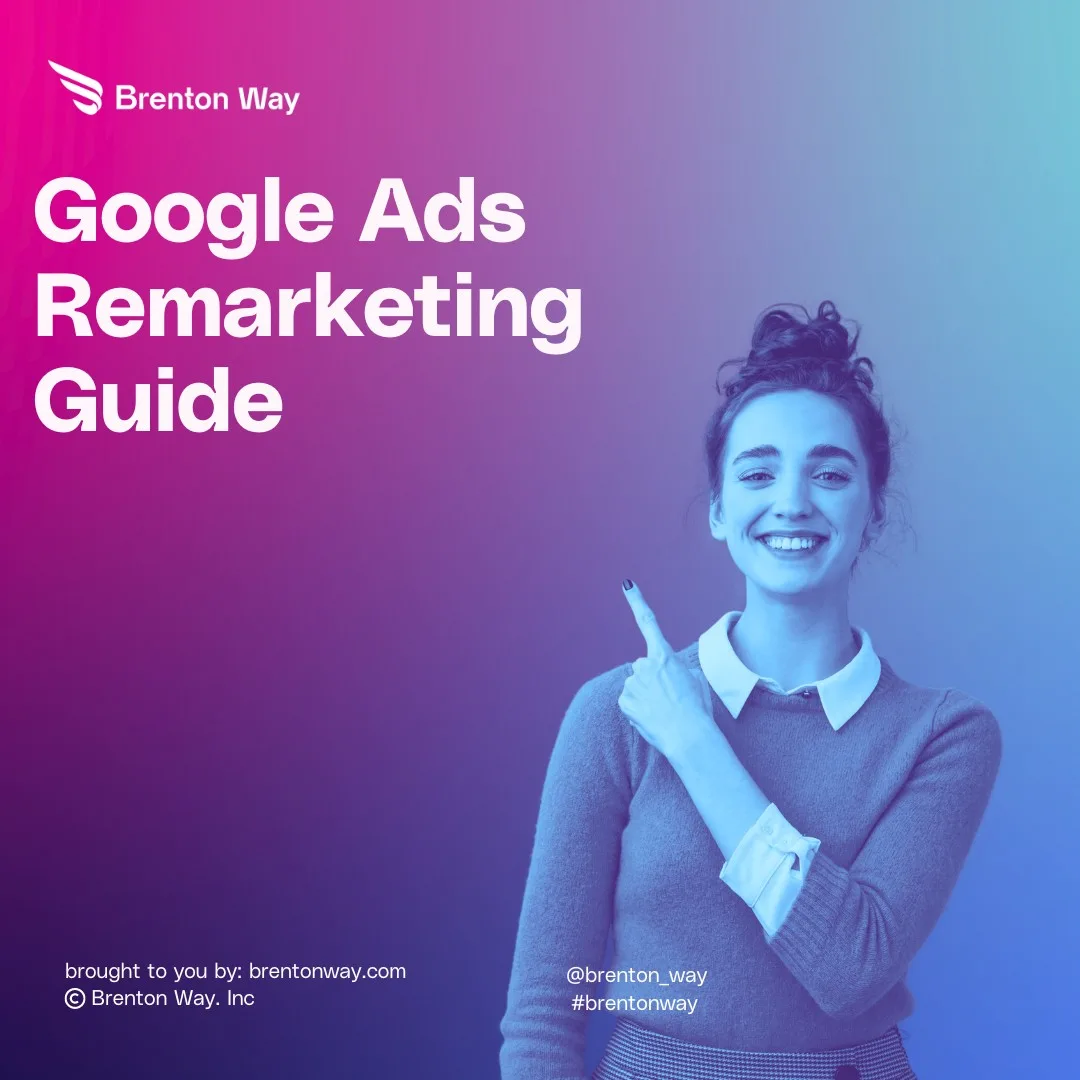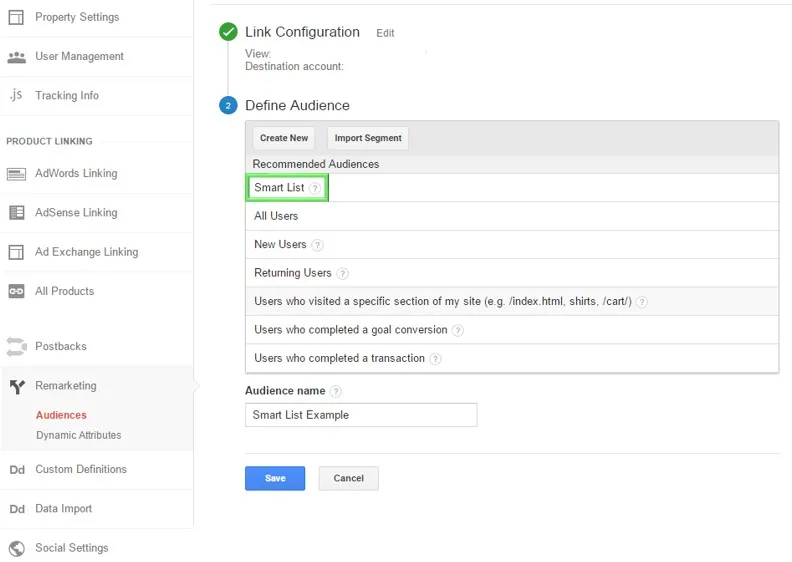
Remarketing is an effective method to help locate and draw in new customers. Businesses can use remarketing to connect with people who have previously connected with their app or website. Retargeting for Google AdWords with the help of a specialized Google Ads agency is an effective online advertising strategy. Enabling marketers to target previous customers […]

Remarketing is an effective method to help locate and draw in new customers.
Businesses can use remarketing to connect with people who have previously connected with their app or website.
Retargeting for Google AdWords with the help of a specialized Google Ads agency is an effective online advertising strategy.
Enabling marketers to target previous customers with personalized online ads gives them an additional chance to make an impact and boost conversions.
This remarketing guide uncovers the potential of retargeting to enhance your advertising activities and ROAS.

A digital marketing tactic called remarketing, frequently referred to as retargeting, involves displaying ads to users who have interacted with a website, app, or brand in the past but did not complete a desired activity, such as making a purchase or starting a subscription.
For example, retargeting allows an e-commerce website to show tailored advertisements to visitors who depart without buying while browsing other websites or social network profiles.
These ads encourage users to return to the website and finish the targeted activity by reminding them of the products or services they have previously expressed interest in.
Google Ads is the most sought-after online ad networks for remarketing. Using tracking technologies like cookies and pixels, it finds and targets people online, giving marketers an effective means to re-engage with their audience and increase conversions.
Also See: 20-Point Digital Marketing Checklist For New Businesses
A key element of Google Ads remarketing is segmentation, which involves categorizing your audience according to their online activities and interactions.
By segmenting your audience, you can develop specific, targeted remarketing ads that appeal to users’ interests and preferences.
Making remarketing lists for various website visitor segments is an efficient segmentation technique.
For instance, one use for this list would be to compile a record of customers who left their shopping carts empty.
Because these potential customers have shown an intent to buy, you can customize your remarketing advertisements to provide them with an extra incentive, such as a discount or a
limited-time offer, to come back and finish their transaction.
In the same way, you can create remarketing lists for website visitors who browsed particular product pages or product categories.
This raises the possibility of conversion by enabling you to target consumers with relevant advertising featuring products they have shown interest in.
You can also create remarketing lists based on visitors who have visited important pages on your website, such as the pricing page, contact page, or homepage.
Moreover, you can modify your remarketing advertising to these consumers’ varying stages of the buyer’s journey to influence their conversion.
Also, you can target distinct user groups with more relevant ads by segmenting your audience and creating personalized remarketing lists.
This will improve the efficacy of your remarketing campaigns and yield better results for your business.
By dynamically creating ads based on users’ previous experiences with your website, dynamic remarketing is a Google Ads tactic that elevates targeted advertising to a new level.
Dynamic remarketing ads feature products or services a user has visited and seen on your website. This is in contrast to typical remarketing campaigns, which use static ads that show the same content to every user.
This remarketing technique operates as follows:
You can include photos, product names, pricing, and other details in your Dynamic remarketing ads. You can use the product feed to pull these details dynamically to ensure that the content of the advertisements matches the user’s interests and preferences.
For instance, if visitors to your website check a pair of shoes but decide not to buy them, they receive advertisements showing those exact shoes in addition to related accessories or similar products.
Dynamic remarketing is the best way to present your audience with more relevant and captivating advertisements. You can remind your consumers about things they are interested in and entice them to revisit your site to complete their orders.

Google Ads’ Smart Lists feature is a tool that automatically identifies high-value viewers who are most inclined to achieve conversions on your website through machine learning algorithms.
Smart Lists enable you to efficiently target consumers with your remarketing efforts by identifying qualities and characteristics of users who have historically shown tendencies to convert. This is done by evaluating user data and behavior patterns.
Google Ads gathers information from website visitors and thoroughly analyzes common characteristics and actions displayed by people who are most likely to finish a desired action.
This research focuses on several variables, including location, device type, session duration, and browsing history.
Google AdWords automatically creates Smart Lists based on the insights obtained from the data analysis after identifying these high-value individuals.
These Smart Lists are continuously updated in real-time to ensure accuracy and match current user activity.
By using Smart Lists instead of audience building or manual segmentation in your remarketing efforts, you can efficiently reach buyers most likely to convert.
With Google’s Smart Lists tool, marketers can leverage data to target the appropriate audience with the right message at the right moment.
Also See: Best Digital Marketing Companies For Dentists

With the help of cross-device remarketing, you can target the users online regardless of where they are by extending the remarketing efforts across several devices.
You can maximize reach and engagement by utilizing cross-device remarketing, which ensures consistency with messaging and experiences across desktops, laptops, smartphones, and tablets.
This strategy understands that consumers frequently move between devices when interacting online and enables advertisers to keep a consistent company presence across all online channels.
For instance, cross-device retargeting allows you to retarget users with relevant advertising when they move to a laptop or tablet, or when they visit your website on their smartphone but don’t convert.
This guarantees that people will continue to think of your brand and raises the possibility of conversion by messaging the target consistently across different devices.
A series of customized ads are created as part of the advertising approach known as “sequential remarketing” to help users navigate the different stages of the conversion funnel.

Sequential remarketing strategies seek to re-engage users, nurture their interest, and ultimately lead them toward conversion by carefully sending adverts at various stages in the user experience.
Ads to raise awareness and remind users of your brand or products kick off the sequential remarketing process.
The first advertisements are meant to reintroduce your brand to visitors who have already visited your website but did not finish a desired activity, such as purchasing something.
Sequential remarketing campaigns change to consideration-focused advertisements as customers move through the funnel, offering more information regarding your products or services.
These advertisements aim to address any unanswered questions or concerns viewers might have, highlight the benefits of your products, and encourage them to interact with you further.
Towards the conclusion of the sequential remarketing sequence, action-oriented ads are shown to encourage visitors to complete a particular activity, such as buying items or signing up for an online service. These advertisements often include powerful calls to action along with exclusive deals or rewards that motivate viewers to become customers.
Lead capture pages play a significant role in leveraging user re-engagement in Google Ads remarketing.
Single web pages called “landing pages” are created with a specific goal, like advertising a product or service and encouraging users to complete a form, buy a certain product, or subscribe to a newsletter.
They are employed in digital marketing efforts to optimize conversion rates by offering a targeted and efficient user experience that aligns with the campaign’s goals.
Users who click on your remarketing advertisements provided by Google Ads should be taken to landing pages carefully designed to address their specific needs. This will increase the probability of conversion.
Also See: Best Digital Marketing Agencies in Los Angeles

Excluding converted users ensures that those who have completed the intended action are not offered retargeting advertisements.
By keeping advertisements from being shown to consumers who are unlikely to convert again, this tactic allows for better ad expenditure.
Businesses can concentrate their advertising efforts on gaining new consumers or urging non-converting users to take additional steps by removing converted customers from remarketing campaigns.
Continuous optimization involves constant campaign monitoring and improvement to improve campaign success and return on investment (ROI).
This approach involves routinely evaluating campaign data, spotting trends, and then testing all methods and tactics to find the most effective methods and tactics for reaching and interacting with target audiences.
Refining Targeting Parameters is a crucial aspect of continuous optimization that guarantees ads are seen by the most appropriate audience segments.
Depending on audience insights and campaign performance statistics, this includes altering the demographics, interests, or behaviors of the target audience.
Furthermore, advertisers can test out various ad formats, messaging alterations, and creative components to determine what appeals to their target audience the most and generates the highest levels of engagement.
You can increase the effectiveness of the advertising budgets, raise campaign ROI, and eventually provide better outcomes over time by consistently modifying remarketing efforts.
Using an iterative approach to campaign management, you can adjust to shifting consumer preferences, market dynamics, and competitive environments, keeping your remarketing campaigns effective and relevant in achieving their business goals.
By implementing these best techniques for Google Ads remarketing, you can effectively reconnect with past visitors, drive repeat engagement, and increase conversions for your business.


